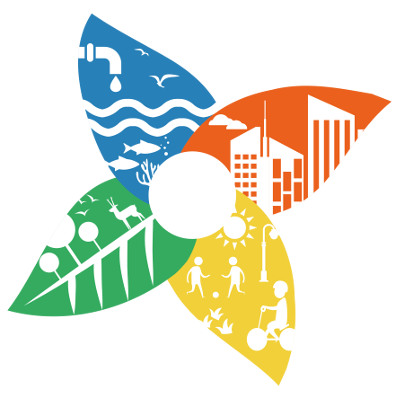Nature is all around us. Also in towns and cities - green, blue, and mixed with grey infrastructure. It is inevitable, blades of grass squeezing through the asphalt cover and bumble bees buzzing around on a warm summer day. Nature is also indispensable, crucial for our survival. It offers us, homo urbanus, many advantages (read: services). At least, if we are smart enough to make use of it. Nature-based solutions are bringing nature (back) to cities. Like chirping birds in a park (offering recreation service), or the cooling shade of trees on a sunny afternoon (offering local climate regulation service, as well as air quality improvement and carbon storage services, and perhaps also noise reduction from heavy urban traffic). We are getting all of this free of charge! Wait, free of charge..?! But as they say ‘there’s no such thing as free lunch’… Everything has a price, be it an explicit market price, or an implicit, shadow price (how fitting for our example). So, what is a tree worth? What is the value of an urban park?
Why should we even care about the monetary value of nature? Firstly, nature can provide answers to some pressing problems of current urban areas (i.e. urban heat islands, water purification, flood regulation, public health). Secondly, introducing, or bringing, more nature to the cities always costs something. Someone needs to plan it, someone else to install it, and again someone else to maintain it. These costs can quite easily be expressed in monetary terms. But what about the benefits that nature provides to the city and its inhabitants? What is the effect of more nature on public health, our well-being, and safety? We know it results in better air quality, less noise, less water nuisance, better climate regulation but without a monetary value a comparison of costs and benefits of nature is difficult.
What is the value of nature? As economists we have two main methods of getting a value. The first is the revealed preference method a method of analyzing choices made by individuals. For example, houses situated closer to green areas might cost more because nature is a positive amenity to people living there. Thus, comparing housing prices at various locations and taking into account other relevant property characteristics (like size, age etc.) we can say with some level of certainty whether proximity to nature adds to property price. The preferences of house owners are revealed in the prices they pay for their houses. Of course this method relies on us making assumptions and applying statistical inference to come up with a number that attaches value to nature. And this is a disadvantage of this method.
Another method is to ask people directly, how much a particular piece of nature or its service are worth to them. This is done by means of special questionnaires, which are of course carefully prepared, tested, and implemented. Such a method is called stated preference method, because respondents to a questionnaire only state their preferences, or values, yet without enacting them.
Economic value database
The NATURVATION project reviewed academic studies of the past 40 years that aimed at inferring value of nature or its services, and compiled a database of such values. Besides the monetary values, the database (called Financial and Economic Value Database, FEVD) includes also the type of landscape valued, type of service (recall the example of a tree shade?), and some other information relevant to decisions concerning the implementation of NBS in urban areas.
Interested to read more about the economic valuation of nature-based solutions? Download our review and briefing paper here.
Marija Bockarjova is a researcher at Utrecht University School of Economics working on the NATURVATION project.
